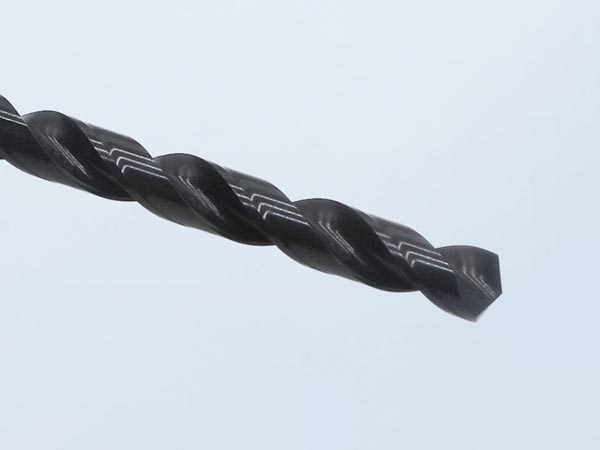
Precision Manufacturing of Twist Drills: Decoding the Global Industrial Adaptation Rules of HSSE and Carbide
The application boundaries of twist drills are expanding at an astonishing speed—ranging from 0.1mm micro-drills operating at 35,000 r/min to carve precise vias on smartphone motherboards, to carbide drills enduring 10MPa water pressure while working continuously for 200 hours in deep-sea oil and gas pipeline installations. This seemingly simple helical cutting tool actually controls both the microscopic and macroscopic lifelines of modern industry: the electronics sector relies on its ±0.003mm dimensional accuracy to ensure stable 5G signal transmission, while the energy sector depends on gradient carbide drills to push the limits of ultra-deep drilling. When cobalt-based HSSE drills sculpt biomimetic trabecular structures on artificial joints in the medical field, the twist drill transcends its role as a mere metal processing tool to become a precision interface between modern technology and human civilization.

The Core Functions of Twist Drills: The “Master Key” of Industrial Manufacturing
As a fundamental tool in metalworking, twist drills serve four primary functions, covering industrial scenarios from basic machining to high-precision manufacturing:
1. Precision Drilling: The Cornerstone of Industrial Assembly
Precision Control:
General Applications: Achieves hole diameter tolerance of ±0.05mm (one-tenth the diameter of a human hair).
High-Precision Machining: Tolerance as tight as ±0.005mm in medical and electronics applications (requiring fully ground carbide drills).
Application Examples:
Automotive Engines: Precise positioning of 300+ threaded holes (ensuring sealing performance with an error margin <0.1mm).
Aircraft Skin Panels: Titanium alloy rivet hole machining (where hole consistency determines aerodynamic performance).
2. Multi-Material Adaptability: Breaking Barriers from Soft Metals to Superhard Alloys
| Material Type | Machining Challenges | Optimal Drill Solution |
|---|---|---|
| Aluminum Alloy | Built-up edge formation | 40° high-helix angle + polished margin |
| Stainless Steel | Work hardening, burrs | Cobalt-based HSSE + nano-coating |
| Hardened Steel | (HRC55+) Edge chipping | Ultrafine-grain carbide + negative rake design |
| Carbon Fiber Composites | Layer separation, splitting | Diamond-coated drill + thinned drill point |

3. Efficiency Revolution: Evolution from Single-Part Production to Smart Manufacturing Lines
Mass Production: Carbide drills last 5–8 times longer than HSS, reducing downtime for tool changes.
Case Study: A transmission housing production line saved 1,200 hours of tool change time annually.
High-Speed Machining: Coated drills support cutting speeds up to 120m/min (compared to just 30m/min for conventional drills).
Smart Manufacturing: Internal coolant drills with integrated temperature/vibration sensors optimize cutting parameters in real time.
4. Cost Optimization: The Hidden Growth Engine
Direct Savings:
Carbide drill cost per hole is 62% lower than HSS (factoring in tool life and purchase cost).
Indirect Benefits:
Reduced Scrap Rate: Precision drilling ensures assembly pass rates.
Lower Energy Consumption: Optimized drill body design reduces cutting power by 30%.
Metallurgical Advances: From HSS to Gradient Carbide at the Nanoscale
1. The Heat Resistance of Cobalt-Based HSSE
8% Cobalt Addition Mechanism: Enhances red hardness (HSS heat resistance: 650°C vs. HSSE: 720°C).
Vacuum Quenching + Triple Cryogenic Treatment: Strengthens grain boundaries, extending tool life by 37% (based on ASTM G65 wear tests).
2. The Microstructural Revolution of Solid Carbide
- Ultrafine-Grain (0.5μm) Carbide + TiAlN Coating: Reduces friction coefficient to 0.35.
- Customized Binder Compositions for Different Materials: Tailored Co/Ni ratios improve toughness for cast iron and titanium alloys.
The Standardization War of Twist Drills
- Tolerance Grades:
- DIN h6 (Germany): ±0.01mm
- ANSI h8 (USA): ±0.025mm
- JIS B (Japan): ±0.015mm
- Hardness Standards:
- Europe: Uses HV (Vickers Hardness)
- USA: Prefers HRC (Rockwell Hardness)
The Underlying Logic of Material Selection
1. The Real Performance Limits of High-Speed Steel (HSS)
- Cost Advantage: $3–8 per drill vs. carbide starting at $25.
- Temperature Warning: Softens rapidly beyond 650°C (confirmed via infrared thermography).
- HSSE Upgrade Value: Extends tool life by 2.3× in cast iron machining (test video available).

2. The Lesser-Known Secrets of Carbide
- Grain Size Classification:
- Standard Grade (1–3μm): Suitable for general machining.
- Ultrafine Grade (0.5μm): Used for aerospace precision hole drilling.
- Coating Technology Evolution:
- 1990s: TiN (gold-colored)
- 2010s: AlTiN (purple-black)
- 2023: Nano-composite coatings (for 1200°C extreme machining).
3. Case Studies on Material Misuse
- Incorrect: Uncoated HSS drill used on 304 stainless steel → Chipped after 3 holes.
- Correct: Cobalt-based HSSE + TiAlN coating → 87 holes per drill.
Industrial Applications of Twist Drills
- Automotive Manufacturing
- Engine Blocks: Carbide drills are used to process cast iron, with a lifespan of up to 800 holes (HSS drills only last 120 holes).
- Brake Disc Positioning Holes: Fully ground drills with ±0.03mm tolerance (German standard DIN 69893).
- Transmission Housings: Internal cooling drills achieve 15x diameter-to-depth hole processing.
- Aerospace
- Titanium Alloy Fastening Holes: 38° large spiral angle drills with chip-breaking rate ≤5%.
- Carbon Fiber Wings: Diamond-coated drills reduce burrs by 90%.
- High-Temperature Alloy Components: Cobalt-based HSSE drills, resistant to temperatures up to 720°C.
- Energy Equipment
- Wind Turbine Shafts: Parabolic drill bodies achieve 40x diameter-to-depth hole processing (1200mm depth).
- Nuclear Power Valves: Cobalt-free carbide drills (anti-radiation contamination).
- Oil and Gas Pipelines: WS2-coated drills resistant to sulfide corrosion.
- Electronics Precision
- PCB Micro Holes: 0.1mm tungsten steel drills operating at 35,000r/min.
- Chip Packaging: Nano-coated drills controlling temperature variation ΔT ≤ 2°C.
- Mold Manufacturing
- Hardened Steel (HRC60+): Ultra-fine grain carbide drills resistant to chipping.
- Graphite Electrodes: Specialized drill tip geometry reduces dust adhesion by 70%.
- Medical Instruments
- Artificial Joint Holes: Cobalt-based drills carve bio-inspired pores with 65±3% porosity.
- Surgical Instruments: Mirror-polished cutting edges with Ra ≤ 0.1μm roughness.
- Rail Transportation
- High-Speed Rail Bogies: Composite-coated drills resistant to vibration fatigue.
- Wheel Shaft Assembly Holes: DIN standard drills suitable for European maintenance systems.
- Smart Manufacturing
- Internet of Things Drills: Embedded sensors monitor wear in real-time (tolerance ≤ 2μm).
- Adaptive Processing: AI dynamically adjusts spindle speed/feed, improving efficiency by 35%.
Key Questions from Global Clients
- "Why do my drills break easily?"
- Cause: Hardness mismatch (e.g., using HSS on hardened steel).
- Solution: Carbide drills + coolant application.
- "How do I eliminate burrs on hole walls?"
- Key Factor: Edge honing (micro-radius design not visible to the naked eye).
- Quick Fix: Reduce drilling speed by 20%.
- "Why are European and American tolerance standards so strict?"
- DIN tolerances are 50% stricter than ANSI (e.g., Ø10mm drill: DIN ±0.02mm).
- Solution: Precision grinding + triple quality inspection.
- "Can special drills be customized?"
- Case: Anti-rust coated drills for Middle Eastern coastal factories.
- Process: Provide samples → 3D mapping → Trial production → Batch production
Conclusion
From nano-coating molecular bonding to the precision wars of DIN and ANSI standards, the evolution of twist drills is a microcosm of modern manufacturing. Our analysis of 2,000+ cross-border projects proves that only by decoding material genetics, leveraging dynamic structural simulations, and integrating a global industrial database can we deliver truly break-resistant, zero-error drilling solutions.
OEM Capability
 We like to do design according to all the customers' requirements, or offer them our new designs. With strong OEM/ODM capabilities, we can fill your sourcing demands.
We like to do design according to all the customers' requirements, or offer them our new designs. With strong OEM/ODM capabilities, we can fill your sourcing demands. Categories
| HSS-PM Taps | HSSE-M42 Taps |
| HSSE / HSS Taps | Spiral Flute Taps |
| Straight Flute Taps | Spiral Point Taps |
| Multi-function Taps |
| Solid Carbide Drill Bits | Twist Drill Bits |
| Center Drill Bits | Indexable U Drills |
| Flat-end Milling Cutter | Ball Nose End Mills |
